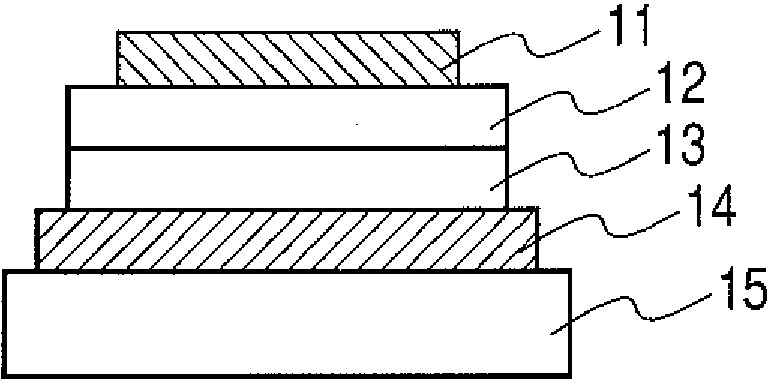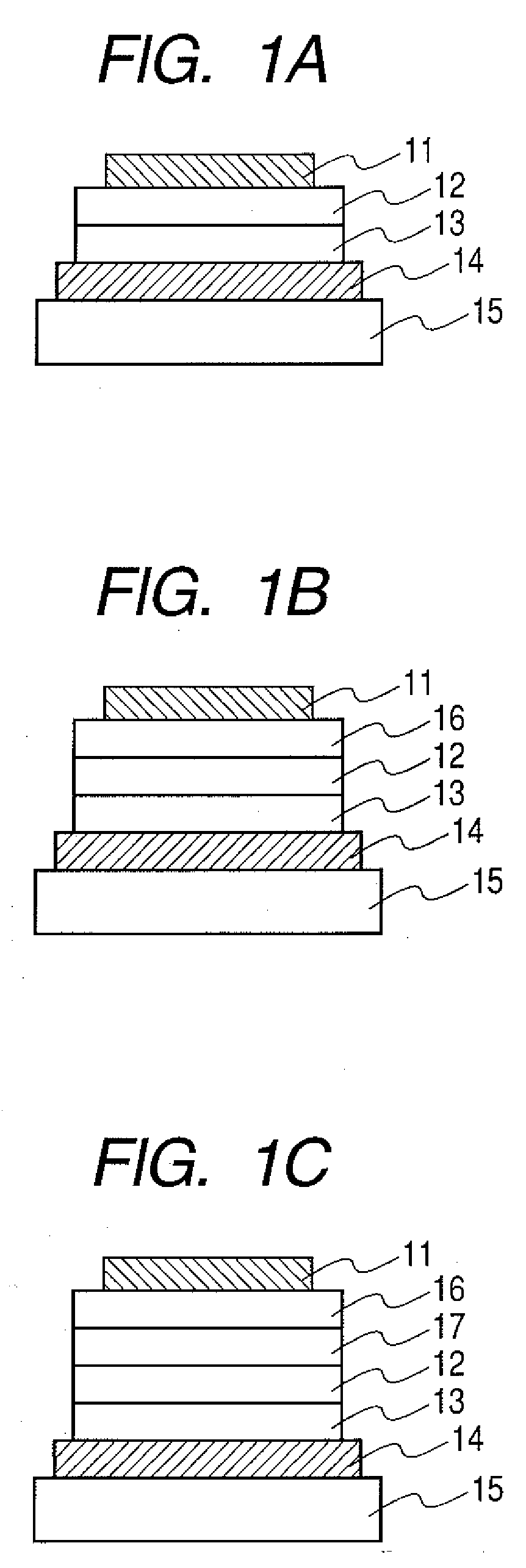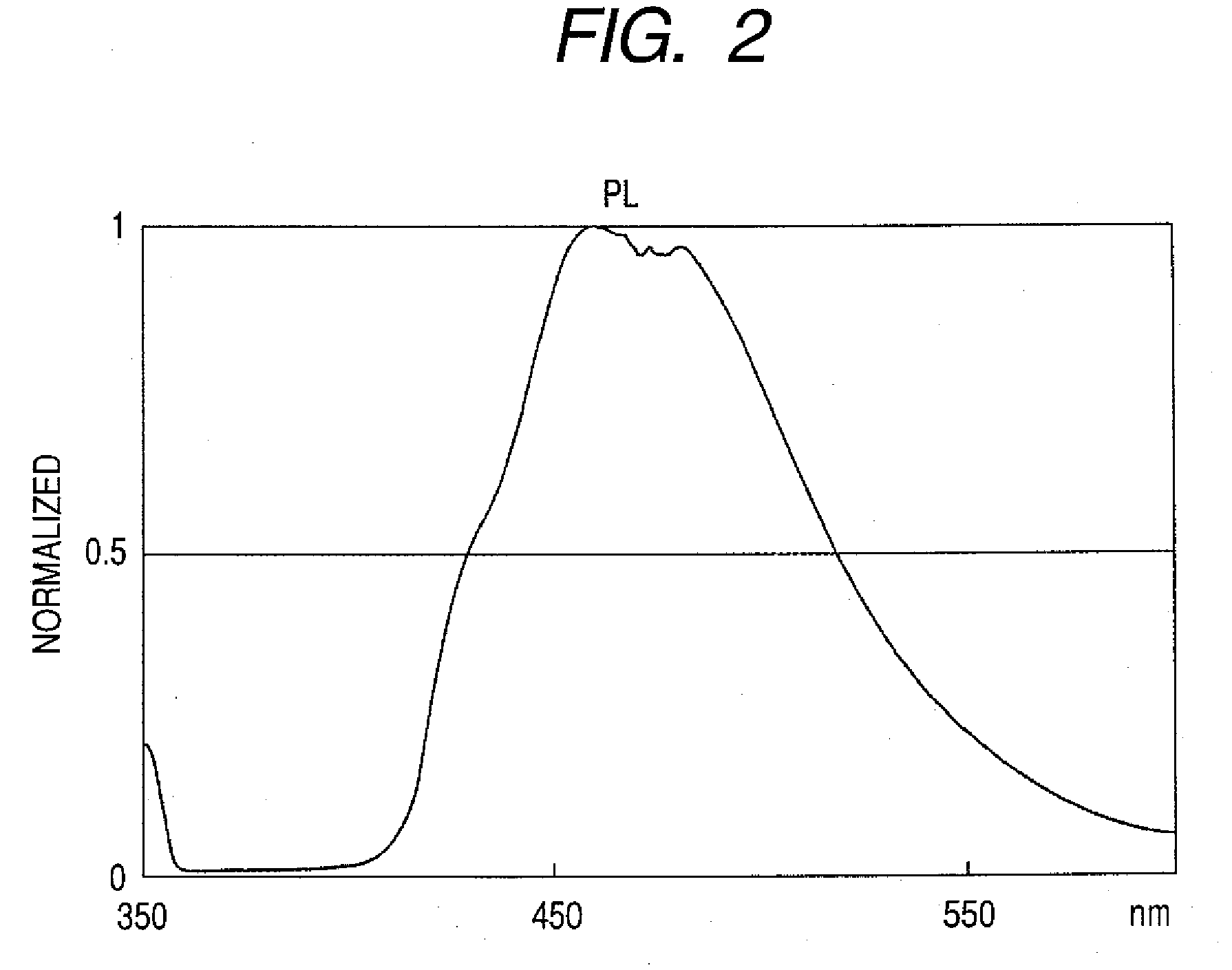Compound and organic el device
a light-emitting device and compound technology, applied in the direction of discharge tube luminescnet screen, other domestic articles, transportation and packaging, etc., can solve the problems of insufficient resolution of emission problems and large number of durability problems of organic light-emitting devices, and achieve high efficiency and high luminance
- Summary
- Abstract
- Description
- Claims
- Application Information
AI Technical Summary
Benefits of technology
Problems solved by technology
Method used
Image
Examples
example 1
Synthesis of Exemplified Compound No. F-28
[0051]
[0052]360 mg (1 mmole) of Compound 1-1, 450 mg (3 mmole) of Compound 1-2 (manufactured by SIGMA-ALDRICH), 0.1 g of Pd(PPh3)4, 10 ml of toluene, 5 ml of ethanol, and 10 ml of a 2M aqueous solution of sodium carbonate were charged into a 100-ml egg plant flask, and the mixture was stirred in a stream of nitrogen at 80° C. for 8 hours. After the completion of the reaction, the crystal was separated by filtration, and was washed with water and ethanol. After having been subjected to hot filtration with toluene, the resultant crystal was recrystallized with toluene / heptane and dried in a vacuum at 120° C., whereby 356 mg of Exemplified Compound No. F-28 were obtained (yield: 87%).
[0053]FIG. 2 shows the graph of the light-emitting characteristics of the compound in toluene.
example 2
[0054]In this example, a device having such device constitution including three organic layers as shown in FIG. 1B was used. ITO was patterned onto a glass substrate to form a pattern having a thickness of 100 nm. The following organic layers and electrode layers were continuously formed on the resultant ITO substrate by vacuum vapor deposition using resistance heating in a vacuum chamber at a pressure of 10−5 Pa so that an opposing electrode area was 3 mm2.
Device A:
[0055]Hole transport layer (20 nm): Compound A
[0056]Light-emitting layer (25 nm): Exemplified Compound No. F-28 (weight ratio 5%):Compound B
[0057]Electron transport layer (40 nm): Bphen
[0058]Metal electrode layer 1 (1 nm): KF
[0059]Metal electrode layer 2 (100 nm): Al
[0060]The current-voltage characteristics of the EL device were measured with a microammeter 4140B manufactured by Hewlett-Packard Company, and the emission luminance of the device was measured with a BM7 manufactured by TOPCON CORPORATION. As a result, the o...
example 3
Synthesis of Exemplified Compound No. F-
[0061]
[0062]984 mg (4 mmole) of Compound 3-1, 1,420 mg (4 mmole) of Compound 3-2, 0.1 g of Pd(PPh3)4, 20 ml of toluene, 10 ml of ethanol, and 20 ml of a 2-M aqueous solution of sodium carbonate were charged into a 200-ml egg plant flask, and the mixture was stirred in a stream of nitrogen at 80° C. for 8 hours. After the completion of the reaction, the crystal was separated by filtration, and was washed with water and ethanol. After having been subjected to hot filtration with toluene, the resultant crystal was recrystallized with toluene / heptane and dried in a vacuum at 120° C., whereby 900 mg of Exemplified Compound No. F-11 were obtained (yield: 72%).
[0063]FIG. 3 shows the graph of the light-emitting characteristic of the compound in toluene.
[0064]Matrix-assisted laser desorption / ionization time-of-flight mass spectrometry (MALDI-TOF MS) confirmed that the compound had an M+ of 430.1.
[0065]A device was produced in the same manner as in Exam...
PUM
| Property | Measurement | Unit |
|---|---|---|
| Structure | aaaaa | aaaaa |
Abstract
Description
Claims
Application Information
 Login to View More
Login to View More - R&D
- Intellectual Property
- Life Sciences
- Materials
- Tech Scout
- Unparalleled Data Quality
- Higher Quality Content
- 60% Fewer Hallucinations
Browse by: Latest US Patents, China's latest patents, Technical Efficacy Thesaurus, Application Domain, Technology Topic, Popular Technical Reports.
© 2025 PatSnap. All rights reserved.Legal|Privacy policy|Modern Slavery Act Transparency Statement|Sitemap|About US| Contact US: help@patsnap.com



